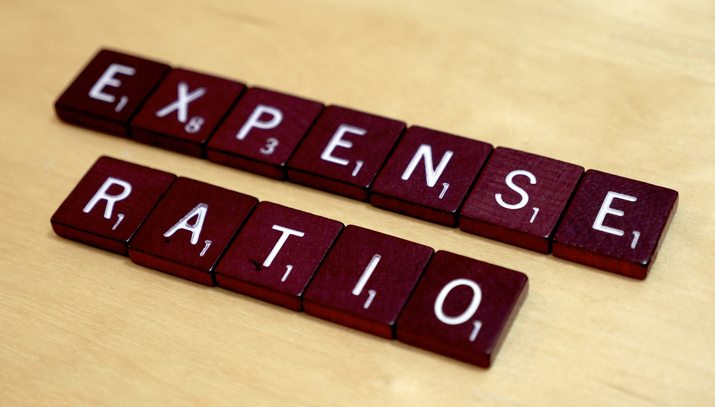Freelancing 101: 10 Things People Forget to Tell You About Freelancing
I have been freelancing for the last decade and there are plenty of days when the words “I quit” slipped through my lips. (Although I took it back pretty quickly.) Life as a freelancer isn’t just working from home and flexible schedules and being your own boss when things are easy. It is sticking with it when those things are tough too.
As a career choice, freelancing comes with plenty of ups and downs. It takes a certain personality to withstand those changes and find success. (Personally, I have found much more success the older I get; freelancing was no fun right out of college.) There’s a lot that I have learned along the way. Here are ten things people forget to tell you about freelancing!
2 Million+ Digital Assets, With Unlimited Downloads
Get unlimited downloads of 2 million+ design resources, themes, templates, photos, graphics and more. Envato Elements starts at $16 per month, and is the best creative subscription we've ever seen.
1. There is a ‘Feast or Famine’ Cycle

There is an unwritten cycle when you freelance – the feast or famine cycle. There is more work than you can handle coming your way, or there is no work at all.
And it will always be that way. It is common complaint from freelancers that have been in the business 20 years and a problem for first-timers as well. You must account for the bad times by saving and planning when times are good.
Feast times can sometimes be just as taxing as famine. Having an abundance of work can create long hours or force you to turn away projects. Create a contingency plan for this very situation: What will you do it there is more work than you can handle? Have a standby list of other freelancers that you can refer clients to, and hopefully they will do the same for you.
2. Paychecks Vary Greatly by Month
With that whole feast of famine cycle comes a very irregular cycle of payments. Depending on your billing terms, your “paychecks” could come 30 or even 60 days after work is completed. (And let’s not even talk about the long turnaround if a client does not pay on time or contests payment.)
It is important to have a business budget. Know what it costs to run your freelancing operation. For me it’s things like the cost of high-speed internet, Adobe software subscription, a few professional magazine subscriptions, stock art services, taxes (don’t forget that one) and a new computer every other year. Add up a year of costs, divide by 12 and you know what you need to stay in business this month.
Then give yourself a paycheck. (Seriously! This is a good way to work in the beginning.) Base that paycheck on how much you think you will realistically have left after expenses over the course of a year, and put everything else in a savings account just in case things get rough. (And maybe you can afford a bonus for yourself at the end of the year.)
3. The Hours Can Be Crazy

One of the big draws to freelancing can be working and making your own schedule. Having every Friday off work? Sign me up!
But it is not that simple. The hours are dependent on the work you have coming in. There can be a lot of longs days or nights if you are slammed. There can be unfilled days with little to do if you are slow. (Those periods can be just as stressful as feeling overworked.)
The other caveat is “home life.” Make sure the others in your household understand and respect your working hours and space. If your spouse gets home from work at 4 p.m. and you’re still three hours from being done, you need to not be pulled away from work for household chores.
4. You Have to Be Business Savvy
One of the things that appeals about freelancing is that you can do what you are good it. If you are a designer, you can design all day long and be really creative.
But you also have to be business savvy. Your livelihood depends on it. If finances aren’t your thing, you need to get help. Hire a CPA to handle accounting and taxes, take a class online or at your local college on business basics and make sure you know how to handle cash flow for your small business.
5. People Will Not Understand What You Do

“Wow, you work from home. Awesome.” “Freelancer? That’s cool.”
Beyond those comments, many people won’t “get it.” Unless you have lived the freelance lifestyle or know someone who has, it can be tough to understand. It can be just as tough to explain. Especially when it is a creative-based business where your friends and family might not ever see any of your work.
6. Everything Starts and Stops with You
You are your own boss. So when an angry client calls – it will happen – you have to handle it. No passing the call along to a supervisor.
There are many other things that fall on your shoulders as well. You have to grind and find work. You have to make sure billing is handled and done on time. You have to ensure that contracts are signed and ready. You have to deal with every single part of the business.
7. Self-Discipline Equals Survival

Distractions are a freelancer’s worst enemy. It will require a level of self-discipline that is hard to explain to combat those distractions and stay on task. Whether you work from a home office or coffee shop, avoiding distractions will be an important part of every work day.
Set ground rules with yourself such as “I won’t walk the dog while I am ‘on the clock’ no matter how beautiful it is outside” or “I will not check Facebook while I am working… ever.” These small distractions eat your time and cut into your profits.
8. People Will Think Your Job is ‘Flaky’
Sadly, people will equate freelancing with flakiness. You will find this with people you know and especially with people you don’t.
Because your income may swing, it can be tough to explain to a bank when it comes time to buy a house or car. Your best defense is back in No. 2 – budget, budget, budget.
9. Operating Expenses Will Eat Your Profits

The hidden costs of freelancing can be expensive. Most freelancers will need some startup capital, just like any other new small business and taxes will account for a significant portion of every dollar that comes in.
Not every penny you make is yours. For this reason, I started, and stopped, freelancing for a while after college. It was actually costing me money to do the freelance work. After I drove to assignments, paid taxes on earnings and spent hours writing, it was actually costing money to work. Not a good plan. So I stopped, regrouped, re-planned and began freelancing again a few years later with a more realistic view. (And it is still working.)
10. It’s a Love It or Leave It Career Choice
The dirty little secret is this: Many freelancers are applying for full-time jobs at other companies, while designers at agencies and firms are dreaming of becoming freelancers.
It can be a great full-time career choice or part-time gig for creative workers. But it’s not an easy path. It can take years to create an established business and name for yourself. For those who do it, they would likely recommend it; others would tell you to run screaming.
Working as a freelancer is something that only you can make a choice about. If you like it, stick with it and if you are struggling, it’s OK to bail out. Freelancing is not for everyone. People tend to love it or hate it, and there’s not much room for wiggle in-between.
Conclusion
Life as a freelancer is a roller-coaster ride for many. Work and everything that comes along with it will ebb and flow. But with the right amount of planning and understanding, it can be a rewarding career choice. (That’s why so many people do it!)
Freelancing 101 is a monthly series to help the increasing number of freelancers in the market. Whether you are a designer, writer, developer or wear multiple hats, we will share tips, resources and ideas to help you make the most of your small business. Is there something in particular you want to know? How do you feel about this series? Let me know at [email protected].
Photo courtesy of Creative Market. Other image sources: Mooganic, Antoine K, Tech Cocktail, Sebastiaan ter Burg and Simon Cunningham.





